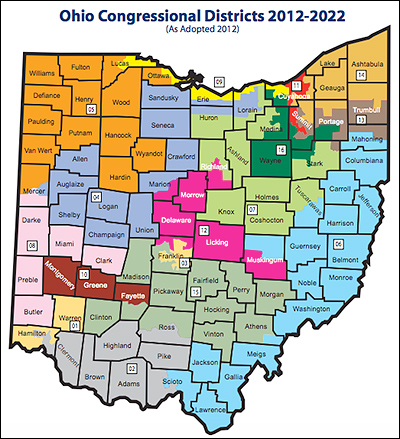Feb. 12, 2018 — The candidate filing deadline in Ohio passed last week — the fifth state to set its political contenders for the coming midterm election.
All of the expected gubernatorial candidates filed, meaning we will see a crowded Democratic field of eight candidates, led by former attorney general and recently resigned federal Consumer Financial Protection Bureau director Richard Cordray. The remaining field features former congressman, Cleveland mayor, state legislator, and two-time presidential candidate Dennis Kucinich; retired state Supreme Court Justice Bill O’Neill; state senator and former minority leader, Joe Schiavoni (D-Mahoning Valley); and Cincinnati ex-state Rep. Connie Pillich.
The Republicans are set for a gubernatorial one-on-one match between attorney general and former US senator, Mike DeWine, and Lt. Gov. Mary Taylor. The general election is expected to feature a DeWine-Cordray battle, which will be a re-match of the 2010 attorney general’s campaign, a contest where DeWine unseated Cordray in a close campaign.
In the US Senate race, Sen. Sherrod Brown (D) sees five Republicans battling for the right to challenge him in November. Rep. Jim Renacci (R-Wadsworth) and investment banker Mike Gibbons are the two leading GOP candidates. Rep. Renacci is leaving his north-central congressional district to run for the Senate, switching to that race from the governor’s campaign after state Treasurer Josh Mandel decided not to run because of his wife’s newly diagnosed health condition. Since Mandel is ineligible to seek another term as treasurer, he will not be on the 2018 Ohio ballot.
In US House of Representatives matchups, the open Renacci 16th District may feature the most interesting primary campaign. Here, former Indianapolis Colts and Ohio State University football player Anthony Gonzalez (R) is battling 29-year-old state Rep. Christina Hagan (R-Marlboro Township) for the open GOP nomination. Gonzalez has already raised just north of $886,000, while Hagan is serving her fourth term in the state House despite being only 29. Her political base, however, is not in the 16th District, but she has a strong chance of uniting regular conservative primary voters because she has developed political strength for being identified with various cutting social issues. She had raised just under $300,000 at the end of 2017. The eventual GOP nominee is expected to hold the seat.
Though all 14 congressional incumbents who are seeking re-election have opponents, and nine drew primary opposition, only one new contender is a sitting office holder of any type; just five of the 47 major party challenger candidates have ever served in an elected capacity. The lone current elected official challenging a congressional incumbent is Hamilton County Clerk of Courts Aftab Pureval (D), who was recruited to challenge veteran Rep. Steve Chabot (R-Cincinnati), chairman of the House Small Business Committee. Therefore, if the Democrats are going to make a move on wresting the majority away from their Republican counterparts, the gains will come outside of Ohio because the challenger field here does not look strong enough to produce any net gains.
There are two open seats in the delegation, and both of those have drawn a large replacement field. A special election has been scheduled to replace resigned Rep. Pat Tiberi (R-Galena) and fill the vacancy of his central Ohio district — which touches part of the Columbus metropolitan area — for the balance of his current term. Tiberi left the House on Jan. 15 to accept a position in the private sector. The 12th District special primary will be held concurrently with the regular primary election on May 8, with the special general coming on Aug, 7. It appears that all 20 Republican, Democrats, and minor party candidates filed for both the special election and the concurrent regular election campaign.
Of the 20 candidates jockeying to replace ex-Rep. Tiberi, 11 are Republicans, while seven seek the Democratic nomination. Two state senators, a county prosecutor, a former municipal official, and the son of a previous lieutenant governor largely comprise the GOP field. The Democrats feature a former county s
heriff, a local county recorder, and an ex-small town mayor. The eventual Republican nominee is expected to hold the seat that supported the last three GOP presidential nominees with percentages ranging between 53 and 55 percent.All of the filed candidates are having their qualification requirements examined, so none are yet officially slotted on the primary ballot. Those certifications should be issued next week.


